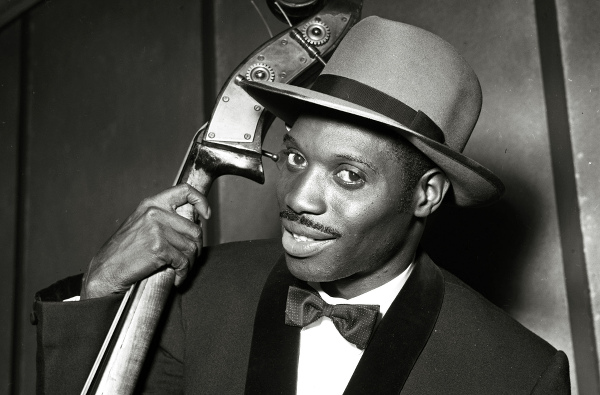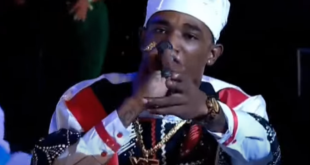There is much common ground between the mechanisms inherent to the narrative of film and calypso. Departing from the same basic treasure (‘the story, the story and the story’), the two media call for different types of interplay between creators and audience.
The merit of the really good calypsonian is the ability, in four verses and a chorus, to depict what directors, actors, storyboard artists, etc do with the aid of celluloid, colour, elaborate lighting and the array of sophisticated digital gadgets available to them nowadays.

(Courtesy Jayblessed)
The calypsonian knows that, armed with what he/she is singing, his/her task is to get audiences to ‘see’ what screenwriter, director and actors actually put on screen. The calypsonian’s art is more evocative, in the most primary sense.
Film is also evocative but its ultimate objective is to place on screen what starts as something captured on paper (110 pages of a screenplay), which is enhanced for final product presentation by what directors, storyboard artists, cameras, DOPs and actors bring to the table.
The calypsonian does all of that endogenously—conjuring up for audiences all the atmosphere, conflict, dramatic development and resolution contained within a story, via voice, rendition and stagecraft. One has only to have seen Sparrow (in his pomp) perform ‘Congo Man’.
Or the final verse of ‘Lying Excuses Pt I’.
Ah know dey go tell you me and Miss Leach
Were seen makin’ love on Maracas Beach,
Well, de fact is she had on a bikini
An’ was attacked by African bees,
An’ very bravely I cover she
Wid mih whole body.
She lock mih neck an’ she grab mih han’
De woman pull me dong in de san’,
Ah bee sting me on mih behin’,
Ah couldn’ help it, ah had to wine.
Dat is all, dat is all, dat is all.

Sparrow does everything an actor might be asked to do to bring such a scene to life. He does everything a camera would be required to do to put the focus on the appropriate parts of the human anatomy and thus create the right atmosphere. He is, here, the quintessential embodiment of the fertile confluence of both media.
A calypsonian with a voice and stage presence unsurpassed, he is also, rolled into one, camera, troubadour, circus performer and film actor conscious of the camera’s location and of what the camera is seeking to get out of him. Additionally, he is stage actor, conscious of the ‘live’ audience mere metres away.
An important caveat: Calypso is not the only musical medium that can boast of a happy marriage with cinema. No need to enumerate the countless musical artistes from any number of cultures across the globe who project images and tell remarkable stories by making use of what their particular musical forms and cultures demand.
One example that readily springs to mind is Pedro Navaja, (Pedro The Knife), by Panama’s Rubén Blades—an account of how a Latino street hustler in New York meets his death at the hands of a prostitute.
Blades’ late 1970s masterpiece has been dubbed una película sonora (a film in song). It is storytelling at its supreme best, using the best of both media. More than four decades after its release, Pedro Navaja is rightly considered a gran clásico.

One final important note: my preference for Sparrow is not due simply to childhood bias that no amount of mellowing with age can cure.
(I have no problem declaring, as The Mighty Chalkdust does in Geoffrey Dunn’s 2004 documentary film, Calypso Dreams, that Sparrow in his pomp was, in every sense, a cut above his peers. ‘Sparrow has everything: social commentary, stagecraft, bacchanal, romance. Everything!’ says Dr Hollis Liverpool.)
I mean no offence to all the other calypso greats who have graced the art. It is thanks to Sparrow’s early-1970s animal trilogy (‘Donkey Cyah Wine’, ‘Lion Donkey Rematch’ and ‘Doctor Rass’) that I was first driven to take a closer look at the common ground inherent in the narrative innards of film and calypso. It is thus unsurprising that the handful of simple illustrations of the parallels I have explored are drawn from Sparrow (and Kitchener and Baron).
It is Sparrow, though, who has provided me with the most abundant and interesting material. And there are so many powerful examples in his extensive work: ‘The Queen’s Canary’ (once again the apprehension and redefinition of reality), ‘Renegades’ (storyboard perfection within the crime thriller, there again mirroring the Scorsese of Mean Streets), ‘Crazy John’, (slap-stick redefinition of reality, à la Buster Keaton), ‘Ten to One is Murder’, (crime chill in a lawless world), ‘Steering Wheel’, (clandestine romance gone comically wrong), ‘Smart Bajan’, (water as element of truth and a Justice symbol) and ‘The Ol’ Man, the Lil Boy an’ the Donkey’, (going nowhere as one travels alongside those among us, being at philosophical odds with reality).

Kitchener and Shadow provide interesting offerings but the Sparrovian oeuvre is of such vastness and profundity that few other calypsonians come close. It is not that I love Kitchener or Shadow less but that I love Sparrow more.
In much of the work of the greats in the calypso pantheon, the common denominator is that the story—well told in 32 lines, with verbal filters, colour and metaphor, camera-like movements and framing—culminates in something that calls into question what is perceived as reality and reflects concerns sensitive artists find difficult to ignore.
Because, like good film, good calypso not only questions, reverses, attempts to correct and ultimately redefines reality. It goes beyond what might be commonly referred to as politics or romance or bacchanal, comesse or social commentary, etc to call into question the very notion of reality.
Owen Thompson, cricket and calypso lover and Atlético de Madrid fan, was born in Tobago, went to school in Trinidad, worked in Portugal, lived for decades in France and Spain and travelled widely in Europe, making him a writer with a world view.
 Wired868 Wired868 for smart sport news and opinion
Wired868 Wired868 for smart sport news and opinion






